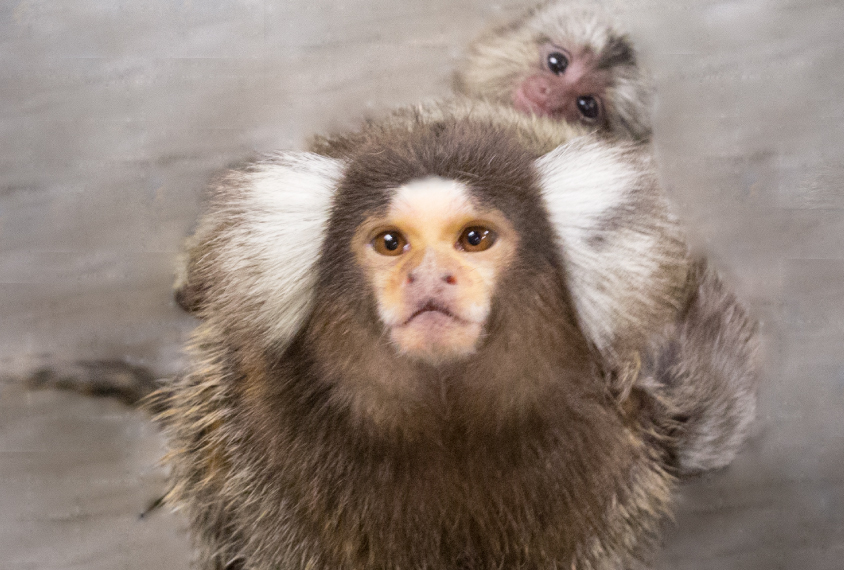
Monkey mics may solve communication mysteries
Tiny monkeys sporting even tinier backpacks are helping scientists understand the nuances of language and social behavior.
Tiny monkeys sporting even tinier backpacks are helping scientists understand the nuances of language and social behavior. The unpublished results were presented yesterday at the 2016 Society for Neuroscience (SfN) annual meeting in San Diego.
The monkeys are marmosets, half-pounders with speckled grey and black fur and white ear tufts. The backpacks contain wireless microphones that enable scientists to distinguish the voices of different monkeys while the animals interact in a cage.
“The marmoset is a really good model in terms of social communication and vocal production,” says Lingyun Zhao, a graduate student in Xiaoqin Wang’s laboratory at Johns Hopkins University in Baltimore, who presented the work.
Marmosets live in groups of 8 to 15 animals and have a rich vocal repertoire of twitters, trills, trillphees, phees and various kinds of peeps. (A phee is a call two monkeys exchange when they cannot see each other.)
Except for the phee, scientists know little about what the calls mean. And in the cacophony of the colony, there’s little hope of sorting this out. “It’s hard to tell who is calling, with so many animals in the same room,” Zhao says. “It’s just like SfN; everyone is talking.”
So the researchers fitted wireless microphones into marmoset-sized backpacks. (It takes the monkeys several days to a week to get used to wearing them.) Because they are personal to each monkey, each microphone picks up the voice of only the animal that wears it.
“I think it’s really exciting,” says Rogier Landman, a graduate student in Robert Desimone’s laboratory at the Massachusetts Institute of Technology in Cambridge, Massachusetts. Landman was not involved in the project but is working on a similar effort to get monkeys fitted with microphones.
Neighborly peeps:
So far, the researchers have tried the backpack microphones with two marmosets and have confirmed that the setup can distinguish between the monkeys’ calls. But their goal is to outfit an entire family group, and use video cameras to record the monkeys’ interactions. Automated software will classify the rich stream of recorded vocalizations.
The researchers have also developed implantable electrodes that can pick up neural activity as the monkeys socialize, and wirelessly transmit the data to a computer.
Another project in the lab involves parabolic microphones, larger devices that sit outside the monkeys’ cages. These sort out the conversations of monkeys in nearby cages that can see but not touch each other.
The parabolic microphones so far indicate that two monkeys that have been neighbors long enough to be familiar produce a lot of trills. And when new neighbors show up, short peeps and rare, uncategorized calls spike.
From the timing of calls from different monkeys, the researchers can piece together which monkeys are conversing. In one experiment with four monkeys in adjacent cages, for example, a monkey was likely to respond to calls from the monkey in the cage next to it. That second monkey was unusually mum when the monkey beneath it called.
“It seems like there are some non-random interactions there,” Zhao says. “We want to work out the social network.”
Eventually, this technology could advance scientists’ understanding of social communication and language in autism. “As people develop transgenic autism models in the marmoset, this will be a useful tool for looking at how social contacts influence vocalizations,” Zhao says.
For more reports from the 2016 Society for Neuroscience annual meeting, please click here.
Recommended reading

New organoid atlas unveils four neurodevelopmental signatures

Glutamate receptors, mRNA transcripts and SYNGAP1; and more

Among brain changes studied in autism, spotlight shifts to subcortex
Explore more from The Transmitter
Can neuroscientists decode memories solely from a map of synaptic connections?

AI-assisted coding: 10 simple rules to maintain scientific rigor
